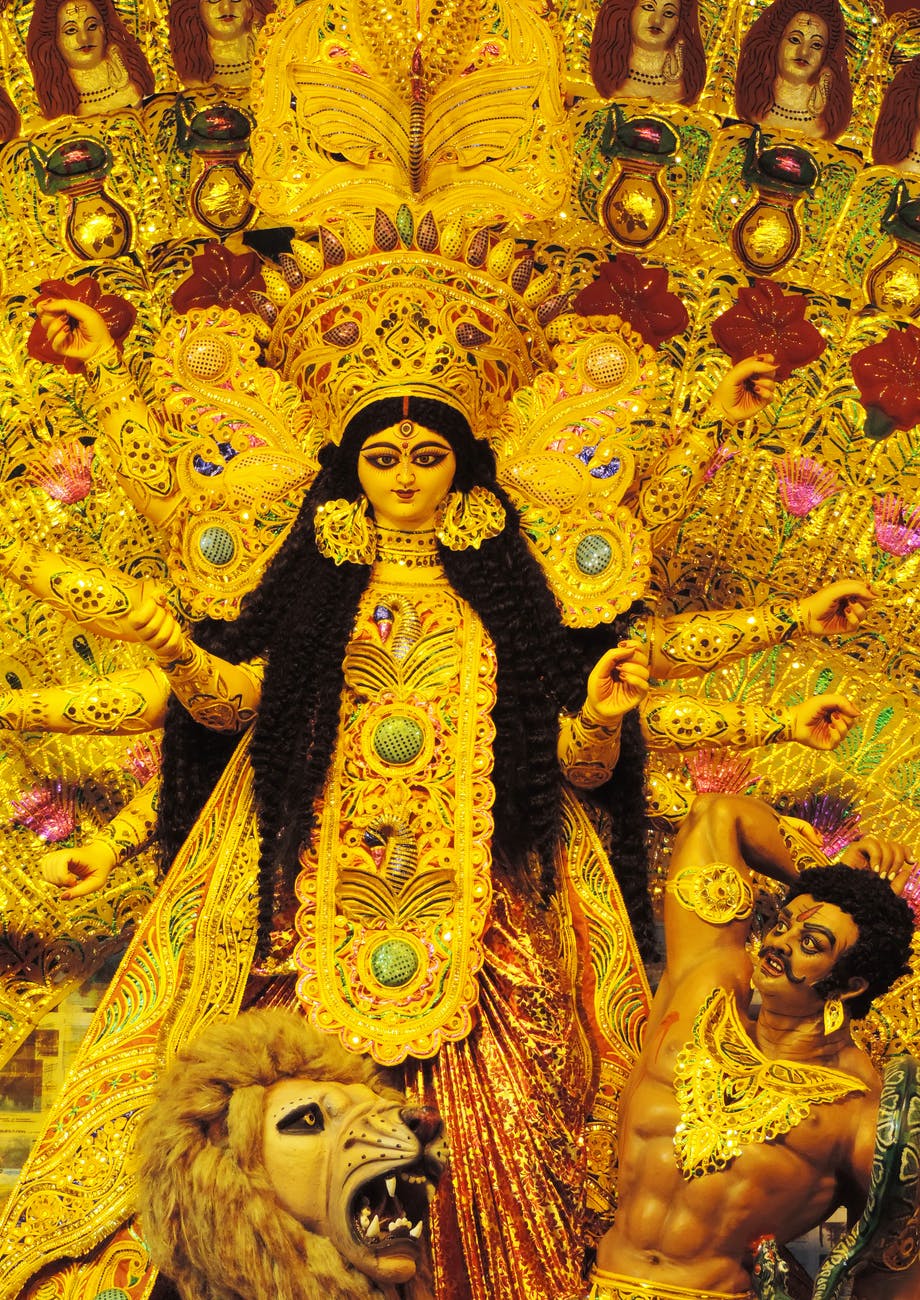Navratri is nine days of celebration of Goddess Durga, Amba, Vaishno, as she is known in different parts of the country.
Most Indian states celebrate this festival in their own way.
Let’s understand two significant celebrations – Kanya Poojan from North India and Maha Ashtami from Bengal.
What is Kanya Poojan?

The philosophy behind Kanya poojan is that the goddess is present in every young girl. Young girls dress up (red is a preferred colour because it represents the goddess).
They are invited to the house, their feet are washed by the male head of the family (as a mark of respect). Then, they are given the prasad of Halwa, poori, and chhole (bengal gram).

It is also customary to give the girls a little money and a small item of personal use – bangles, bindi, etc.
Five or seven girls and one boy is worshipped in each household.

In some cultures, the tradition might vary slightly.
Maha Ashtami
In Bengal, Maha Ashtami is a huge celebration.
The day starts with pushpanjali (offering of flowers) to the goddess. During the day, Dhunuchi dance is performed to the beats of the Dhak drum beats.
Devotees fast and then feast.
This year, Durga Ashtami is on Sunday, 22nd October.

